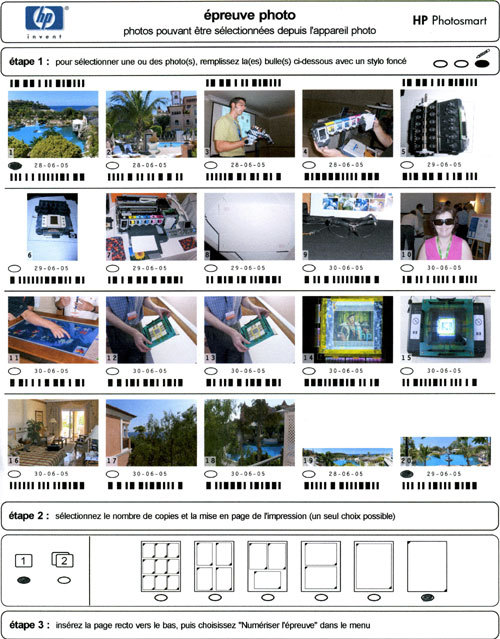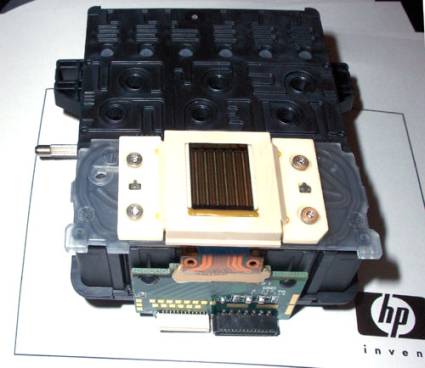Canon, HP's Xmas Ink-Jet Printer Fleet
HP Photosmart 8250
HP has been the leader in the inkjet-printer market almost since that market came into existence. But this time, HP hasn't rested on their laurels. Seeing that the competition, Canon in particular, is offering products that lead in terms of speed and cost per page, HP was forced to go back to the drawing board. For the first time, with this Photosmart 8250, HP is offering a consumer-market model with separate ink cartridges. We were curious to see if the effort has paid off.
Ergonomics And Design
On the outside, the Photosmart 8250 looks like any other HP printer. The control panel, as complete as always, now has a very large (for a printer) LCD display and numerous function buttons for direct access to certain settings. There's a PictBridge connector and a memory-card slot, and some very interesting and effective possibilities - such as an automatic red-eye reduction function that works especially well, and the possibility of reframing shots.
The most original feature is the index sheet function. First, you print out a page of thumbnails of the photos stored on a memory card. Then you mark the ones you want to print, and put the index sheet back in the document loader - as with a scanner - and the Photosmart detects the photos you selected and prints them on your chosen paper. It's a neat feature that can save you a lot of time.
But this innovative function - which has been available up to now only on multifunction printers that include a scanner - obviously doesn't steal the show from the main attraction. When you open the Photosmart 8250's cover, you see six locations for ink cartridges, taking up almost the entire width of the printer. On this model at least, the combined cartridges we were familiar with on HP printers, with their exorbitant cost and low yield, are gone. And unlike the system used by Canon and Epson, HP's cartridges are fixed and therefore independent from the printing head. It has a reservoir that serves as a buffer for the ink fed by the cartridges. The result is that the total weight of the printing head is reduced and the head can move faster. It works quite well, as you'll see.
Get Tom's Hardware's best news and in-depth reviews, straight to your inbox.



